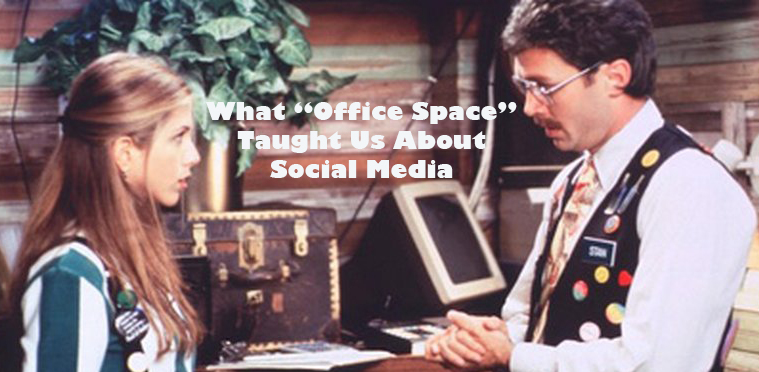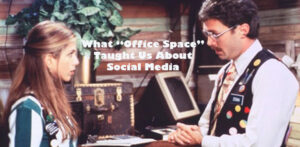

A good social media lesson can come from the most unlikely places.
Have you seen the movie Office Space? Do you remember the scene where the restaurant manager criticizes Jennifer Anniston for not wearing enough ‘pieces of flair’ on her work uniform, while her co-worker Brian was going above and beyond the 15-piece minimum by wearing 37 pieces?
There’s an important branding and social media lesson to be learned from that scene. You see, the manager wanted his employees to become advocates for the restaurant by wearing ‘flair’ on their uniforms to show their excitement about the brand.
Too often, we see social media campaigns, sometimes very good campaigns with good content and vision, that seek to use social media to develop online ‘brand advocates’ to virally grow their brand, while failing to use those who know and should support the brand the most; their employees.
After all, the best reference we can get to grow our brands is from a trusted friend or family member of the new consumer. What better way (affordably and effectively) to do it than with social media, where a simple click from a follower can instantly notify their online connections of their support for our brands. We call this instilling the ‘social media mentality’ in your company. We’ve seen it done and the results are powerful.
But how do we use employees to grow our brands? There’s a few ways:
1- Ask them. At your business, it’s likely that most of your employees already use one or more social media platforms. Sometimes it’s as simple as asking them to use their personal accounts to Share, Like, and Retweet your brand’s content.
2- Train them. Some of your employees will not be on social media or may not use all of the platforms that your company or organization uses. If you have a communications or social media expert within your company, ask them to spend an hour helping set up accounts and showing your employees the dos and don’ts of these new mediums. If you don’t have an expert, hire a local social media manager to come in and work with your employees.
3- Incentivize them. Workplace incentives have been commonplace for a long time. Why not encourage your employees to use social media and incentivize them with a $10 gift card each week if they participate.
The opportunities are limitless. Consider this example. A company has 10 employees. Half of your employees have Facebook and half do not. You spend an hour setting up accounts for the other employees and help them through the simple steps of connecting with their friends (keep in mind Facebook allows you to instantly connect with your contacts in your phone and other platforms have similar features for connecting with friends).
After just one week of encouraging your employees to use their pages to promote your brand, your employees average 300 Friends and each employee shares one post each day. In just one week, your potential reach on Facebook has increased by 21,000 people. With good content, the potential to grow virally beyond that increases exponentially. Add more platforms, more friends, or more employee engagement, and the numbers continue to climb.
Successfully executing this strategy requires setting boundaries with your employees so they are comfortable with the strategy. But it has huge potential and requires little to no investment.
Don’t forget, when it comes to social media, it’s okay to ask your employees to go above and beyond the ‘minimum pieces of flair.’ That’s a social media lesson you can’t afford to ignore.
But even if your employees have been converted into effective online brand evangelists, you still could be derailing your online success if you are making any of the five most common social media mistakes. Not sure you even need to be doing social media? Let me show you how social media is saving today’s advertisers and marketers in the current fragmented media environment.
